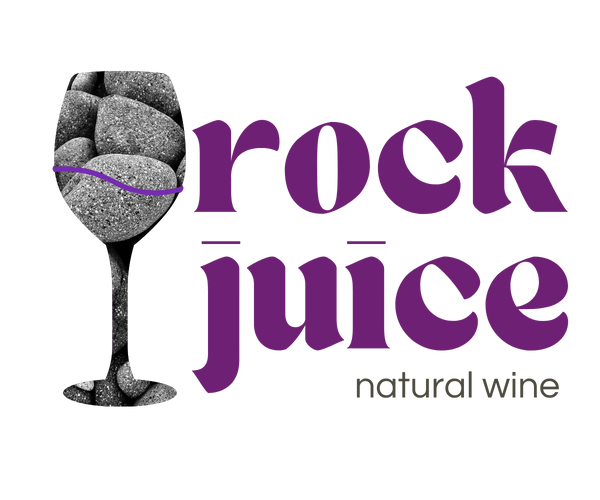Full disclosure: I sell natural wine via my company, Rock Juice. So I am definitely biased…
So here’s the thing. I love wine, and it makes me happy opening up people’s eyes to great bottles, something I’ve been doing professionally for the past 10 years. But something changed for me in the last few years: I learned about natural wine, essentially just fermented grape juice, and was shocked that all wine wasn’t made that way. So I started researching, learning how different producers were working, and discovering a whole range of delicious natural wines that I wanted to drink. I could do this, because I had access to importers, producers and information. But there is no transparency in wine, so the average wine lover has no idea what they’re getting. I’m on a mission to change that.
But first – what is natural wine? If you don’t know the answer, don’t feel bad—most people don’t. That’s because the term natural wine is open to interpretation. There is no standard definition and no regulation, so people have their own ideas here. But in general, and for me personally, natural wine refers to a bunch of farming and winemaking practices rooted in the idea of messing with the grapes as little as possible, both in the field and the cellar. Farming is organic or biodynamic, preferably certified, but often just practicing. Vintners spray no chemicals on vines, harvest their grapes by hand, rely on natural, wild yeasts for fermentation, and add nothing to the wine except a small amount of sulfur – or none at all.
I want to drink wine that is fermented grape juice and little else. But in reality, most wine is a lot more than that. During vinification —when the grapes transform into wine—all sorts of elements can be added (there are around 100 allowable additives). Lab-manufactured (and often GMO) yeast. Enzymes. Wood chips (to give wines an oaky taste). Acidifiers. Tannins. Mega-purple. Sugar. Wines are filtered and “fined” (adding a whole range of substances that collect particulate matter, many made from animal parts) to make them less cloudy. There’s a process called “micro-oxygenation” that can soften harsh tannins, and another called “reverse osmosis” that can filter out unwanted flavors in a wine and bring down alcohol levels. Basically all sorts of tricks and tools to force wine into a recipe, to ensure consistency, to control the flavor and outcome. Not natural.
And then there’s sulfur. Technically, no wine is sulfite-free: a small amount of sulfites occur naturally in wine during fermentation. But most winemakers add additional sulfur as a preservative, to protect the wine from oxidizing or possibly re-fermenting in the bottle, and to kill off bacteria and other nasty stuff in wine brought in by industrial harvesting and processing of grapes (rat parts, anyone?) Sulfur dioxide can be added to grapes before they are crushed and throughout the entire winemaking process. The most hardcore natural-wine makers won’t add any at all, while most will add a very, very small amount, compared to their conventional counterparts. Even what seems like the most natural part of winemaking—yeast—usually isn’t. Most winemakers order yeast from catalogs, choosing specific strains designed for their particular grape varietals, or for creating specific flavor profiles (buttery Chardonnay, anyone?) I’m with Alice Feiring, natural wine critic and author, who says “Natural yeasts hold the DNA of the vintage, and when you use commercial yeasts instead, all the terroir is lost.”
Next up: Deciphering labels: organic/biodynamic/vegan friendly/other random certifications, what does it all mean?

